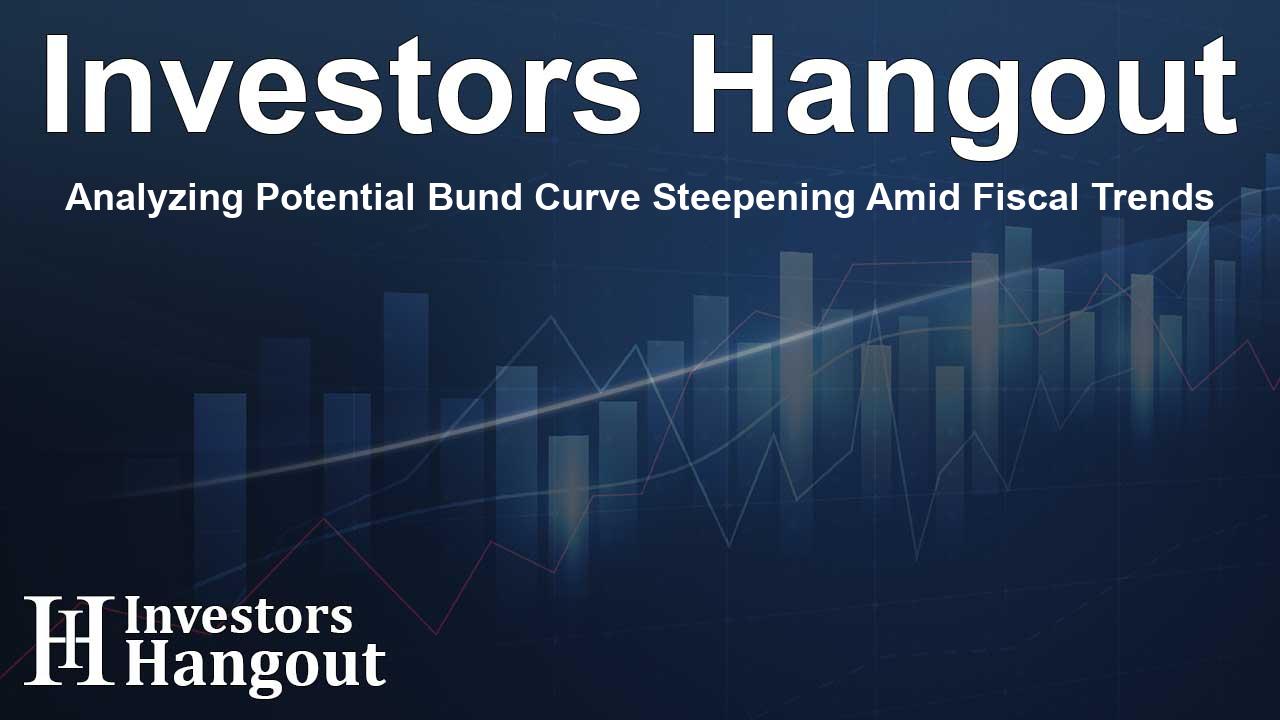Analyzing Potential Bund Curve Steepening Amid Fiscal Trends

Understanding Bund Curve Dynamics in Today's Economy
Recent trends indicate that German 30-year yields are on the rise, signaling a potential for extended curve steepening. Key factors contributing to this scenario are Germany's fiscal strategies and adjustments within pension fund frameworks. Notably, the US also reflects similar patterns, characterized by fiscal concerns and ongoing pressures from economic indicators.
Insight on US CPI and Fiscal Deficit Developments
The US fiscal deficit for July has been reported at an alarming $291 billion, revealing an increasing trend in fiscal pressure. Customs duties have spiked from $7 billion to $27 billion, indicating a significant shift in revenue streams. While spending growth surpasses the uptick in receipts, the overall deficit stands at $1.6 trillion, compared to $1.5 trillion from the previous year. This ongoing fiscal strain raised concerns, as the anticipated deficit surpassed market expectations.
Inflation data, particularly the Consumer Price Index (CPI), presented a mixed bag. Month-on-month changes showed a modest increase of 0.2% in the headline figure and a core increase of 0.3%. However, the year-on-year core inflation reached 3.1%, revealing troubling signs ahead, potentially heading towards 4% due to tariff impacts. The market reacted with fluctuations; yet, the 2-year yield saw a decline, whereas the 10-year yield experienced a minor uptick, resulting in a steeper curve along with decreased inflation expectations.
Implications of European Rate Expectations on the Market
The reaction to the recent CPI data prompted a twist in the US yield curves. Interestingly, the most substantial bearish pressure on EUR rates seems to stem from jobs data released recently. This bearish sentiment fostered a steepening in the EUR curve, suggesting front-end rates may have limited room for further increases, given current market assessments that do not fully anticipate additional rate cuts by the European Central Bank (ECB).
On the other hand, the long end of the curve may continue to face upward yield movements. The 30-year German Bund yield recently hit levels not observed since 2011, exceeding its previous high for 2023. Observations indicate that the Bunds' 10s30s spread is currently testing previous highs from 2021, yet history suggests that the ECB’s rate cycle typically experiences curves exceeding 60 basis points during similar conditions.
Economic Pressures and Forecasting Outcomes
From a structural viewpoint, the transition in Dutch pension funds towards a defined contribution system alongside German fiscal policies is anticipated to exert persistent upward pressure on long-end rates. It is essential to recognize that external economic influences, especially those originating from outside the eurozone, could stir additional bearish effects in the near future.
A Concluding Note on Market Perspectives
In interpreting these economic indicators and fiscal pressures, we need to stay informed about potential market movements and adapt our strategies accordingly. The evolving fiscal landscape continues to pose challenges and opportunities for investors, and remaining agile in response to these developments will be critical to navigating the coming economic tides.
Frequently Asked Questions
What contributes to the steepening of the Bund curve?
The Bund curve steepening is influenced by fiscal policies, economic data, and changes in yield expectations, particularly for long-end maturities.
What are recent trends in US fiscal deficits?
Recent data indicates a rising fiscal deficit, with July's figures hitting $291 billion, reflecting increasing governmental spending pressures.
How does the CPI affect bond yields?
CPI data influences market expectations regarding inflation, which in turn affects bond yields, leading to adjustments in investment strategies.
What is the significance of the ECB’s interest rate decisions?
The ECB’s decisions on interest rates have profound implications for the yield curves in Europe, influencing both short-term and long-term borrowing rates.
What external factors might impact the eurozone economy?
External economic conditions, such as global market trends and geopolitical developments, can significantly affect eurozone markets and investor sentiment.
About The Author
Contact Caleb Price privately here. Or send an email with ATTN: Caleb Price as the subject to contact@investorshangout.com.
About Investors Hangout
Investors Hangout is a leading online stock forum for financial discussion and learning, offering a wide range of free tools and resources. It draws in traders of all levels, who exchange market knowledge, investigate trading tactics, and keep an eye on industry developments in real time. Featuring financial articles, stock message boards, quotes, charts, company profiles, and live news updates. Through cooperative learning and a wealth of informational resources, it helps users from novices creating their first portfolios to experts honing their techniques. Join Investors Hangout today: https://investorshangout.com/
The content of this article is based on factual, publicly available information and does not represent legal, financial, or investment advice. Investors Hangout does not offer financial advice, and the author is not a licensed financial advisor. Consult a qualified advisor before making any financial or investment decisions based on this article. This article should not be considered advice to purchase, sell, or hold any securities or other investments. If any of the material provided here is inaccurate, please contact us for corrections.
